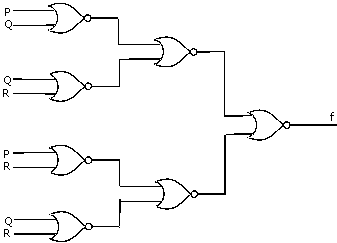GATE CS 2010
Question 1
Question 2
Newton-Raphson method is used to compute a root of the equation x2-13=0 with 3.5 as the initial value. The approximation after one iteration is
Question 4
Question 7
A main memory unit with a capacity of 4 megabytes is built using 1M × 1-bit DRAM chips. Each DRAM chip has 1K rows of cells with 1K cells in each row. The time taken for a single refresh operation is 100 nanoseconds. The time required to perform one refresh operation on all the cells in the memory unit is:-
A.100 nanoseconds
B.100×210 nanoseconds
C.100×220 nanoseconds
D.3200×220 nanoseconds
Question 8
P is a 16-bit signed integer. The 2\'s complement representation of P is (F87B)16.The 2\'s complement representation of 8*P
Question 9
The Boolean expression for the output \'f\' of the multiplexer shown below is:
[caption width="800"] [/caption]
[/caption]Question 10
Two alternative packages A and B are available for processing a database having 10k records. Package A requires 0.0001n2 time units and package B requires 10nlog10n time units to process n records. What is the smallest value of k for which package B will be preferred over A?
There are 63 questions to complete.